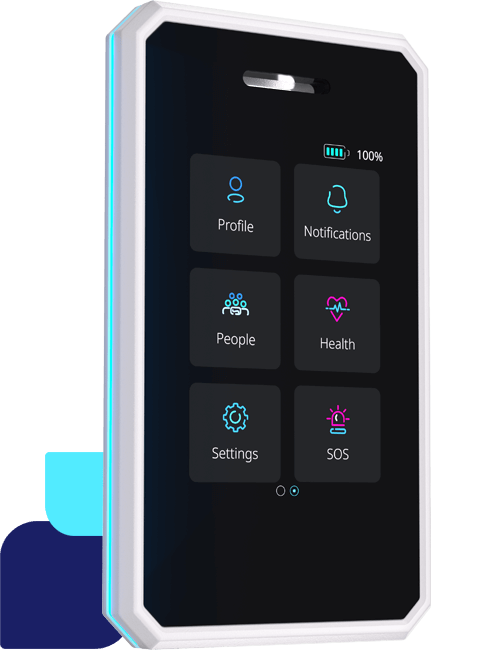Welcome to the digital age, where businesses are constantly seeking ways to optimise their operations and resources. But one area that often goes overlooked is office utilisation.
Efficiently utilising office space not only reduces costs but also enhances employee collaboration and productivity. In this blog post, we will explore the concept of office utilisation, its significance, and how organisations can leverage real-time location solutions to maximise their workspace efficiency.
The Importance of office utilisation
Efficient space utilisation is a strategic imperative for businesses today, with more and more businesses adopting smart offices, which use smart lighting, smart heating, and access control systems. By using the latest technology such as Sense, companies who are looking to analyse and understand office utilisation, can achieve the following benefits:
- Cost savings: Optimised office utilisation minimises the need for excessive square footage and unnecessary office leases, resulting in significant cost savings for businesses.
- Productivity enhancement: By tailoring the workspace to employees’ needs, better office utilisation can foster better collaboration, communication, and overall productivity.
- Real estate optimisation: Utilisation insights allow businesses to identify underutilised areas and repurpose them effectively or consider downsizing if appropriate, ensuring every square foot is put to good use.
Tools and technologies for office utilisation
Using advanced tools and technologies, such as Sense real-time location solutions, is key to gaining accurate insights into office utilisation. The Sense system can demonstrate to users where wearable devices are within smart offices. It can also demonstrate what desks are in use, alongside where is under, or over-utilised. Integrations with environmental sensors and access management platforms can help you achieve an all-encompassing view of how well your office space is utilised.
- Sensor technologies: Intelligent buildings often contain occupancy sensors and desk sensors which provide real-time data on space occupancy, enabling organisations to monitor and analyse usage patterns accurately.
- Utilisation software and platforms: Purpose-built software and platforms collect and analyse data, offering valuable insights, such as heatmapping, into how different areas are being used and identifying trends or areas for improvement.
- Workplace management systems: Integrating utilisation data with access control systems and room booking tools allows organisations to manage and optimise office spaces effectively.
Benefits of office utilisation analysis
Office utilisation analysis, combined with real-time location solutions, can bring about several advantages:
- Optimal space allocation: Real-time location solutions provide precise location data, allowing organisations to understand the real-time occupancy of workstations, meeting rooms, and collaboration areas. This enables accurate allocation of resources, ensuring that space is used efficiently and reducing instances of overcrowding or underutilisation.
- Creating a dynamic workspace: With real-time location solutions, organisations can visualise the utilisation of different areas in real-time. This enables them to identify trends, usage patterns, and peak hours, allowing for dynamic space management. For example, if a meeting room is underutilised during certain hours, it can be made available for other purposes or temporarily converted into additional workstations.
- Agile workplace strategies: Real-time location solutions empower organisations to implement agile workplace strategies, such as hot desking or activity-based working. Employees can easily locate available workspaces in real-time, ensuring they find a suitable space that aligns with their needs and preferences.
- Resource optimisation: By leveraging real-time location solutions, organisations can identify areas with low utilisation and make informed decisions about resource allocation. For example, if a specific floor or section of the office is consistently underutilised, it can be repurposed or downsized, optimizing resource allocation, and reducing unnecessary costs.
- You can empower employees with the flexibility and autonomy to choose their workspace based on their needs and preferences. Provide guidelines and resources to help employees navigate the agile environment effectively, such as technology support, room booking systems, and collaborative tools.
Challenges and Considerations
Implementing real time location solutions to help with office utilisation analysis can be challenging and it’s important to check the boxes and make the following considerations before going ahead – including how you manage data privacy. When implementing real-time location solutions, organisations must ensure that employee privacy is respected, and that data is collected and handled in accordance with relevant privacy regulations.
You also need to consider your change management strategy. Change management processes can ensure a smooth transition and successful adoption, so it’s important you engage key stakeholders, such as executives, managers, and employees. It’s crucial you gain their support and involvement in the change process. Communicate the rationale behind the shift, emphasising the benefits to both the organisation and individuals.
Training and education will become an important part of this change management. It’s essential to ensure that employees understand the new workplace strategies, the utilisation analysis tools, and how to make the most of the environment. Offer workshops, tutorials, and resources to help employees navigate the changes and adapt to new ways of working.
Finally, you should also address resistance. It’s important to address concerns and misconceptions head-on. Encourage open dialogue and create channels for feedback to address employees’ questions, uncertainties, and resistance. Addressing concerns promptly helps build trust and fosters a positive transition experience.
To conclude, if you want to digitally transform and improve the way your organisation utilises its workspaces, then speak to Sense. Our consultants can help you move forward toward a better way of working.







